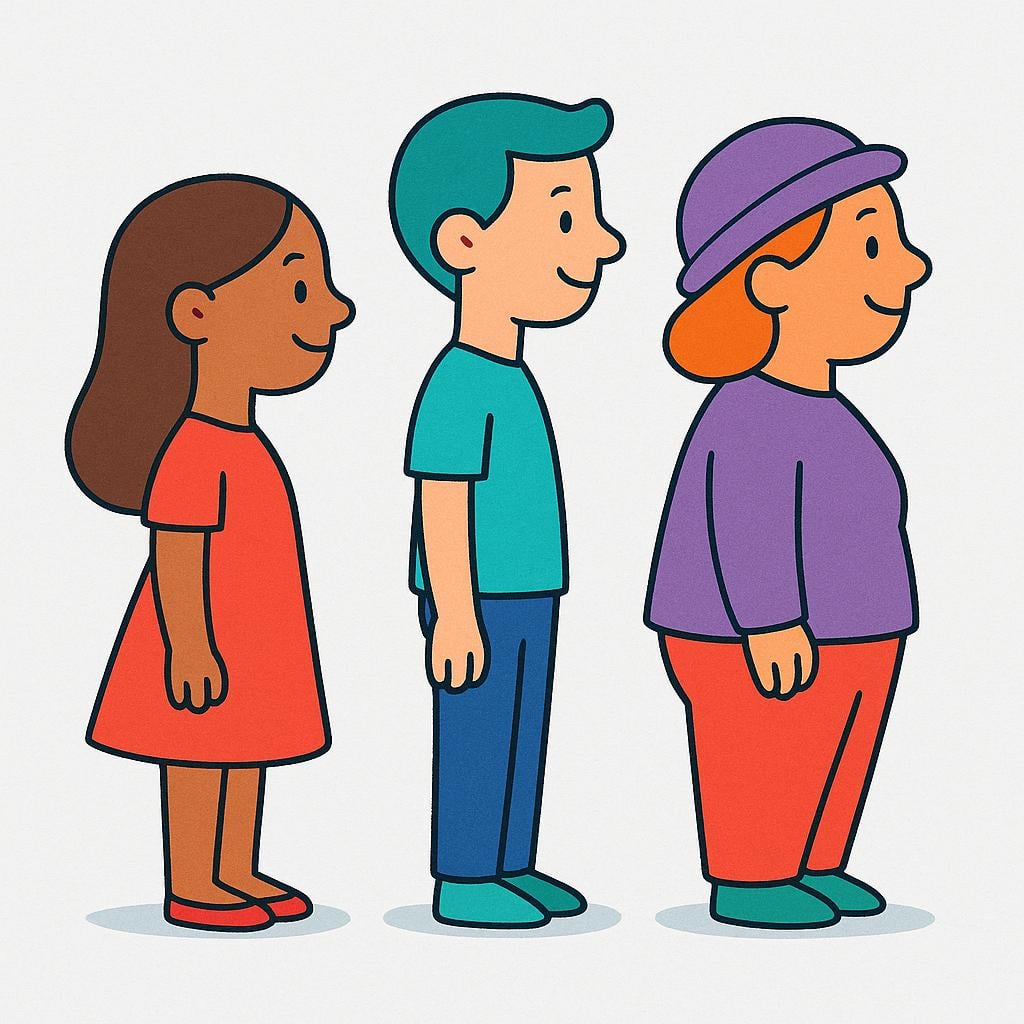cola
/KOH-lah/
tail

The word 'cola' means tail, like the one belonging to this fox.
📝 In Action
El gato tiene una cola muy larga y esponjosa.
A1The cat has a very long and fluffy tail.
La novia caminó con su impresionante cola de vestido.
A2The bride walked with the impressive train of her dress.
💡 Grammar Points
Gender Reminder
Even though 'cola' ends in '-a', remember that not all feminine words end in '-a' and not all masculine words end in '-o', but 'cola' follows the common pattern.

When referring to people, 'cola' means a line or queue.
📝 In Action
Había una cola enorme para comprar las entradas del concierto.
A1There was a huge line to buy the concert tickets.
No me gusta hacer cola en el supermercado.
A1I don't like waiting in line at the supermarket.
Hay una cola de tres kilómetros en la carretera.
B1There is a three-kilometer traffic jam on the highway.
💡 Grammar Points
Key Verb: Hacer
The most common way to say 'to wait in line' is using the verb 'hacer' (to do/make): 'hacer cola'.
⭐ Usage Tips
Regional Differences
In many Latin American countries (like Mexico or Argentina), they often use 'fila' instead of 'cola' when referring to a line of people, though 'cola' is universally understood.

'Cola' can also refer to an adhesive substance, or glue.
📝 In Action
Usa esta cola fuerte para fijar la madera rota.
B1Use this strong glue to fix the broken wood.
Compramos un bote grande de cola blanca para el proyecto escolar.
B1We bought a large jar of white glue for the school project.
❌ Common Pitfalls
Confusing Nouns
Mistake: "Using 'pegamento' when referring specifically to certain types of liquid glue common in crafts (where 'cola' is often preferred)."
Correction: While 'pegamento' is always correct for 'glue,' 'cola' is very common for standard white glue or woodworking adhesive.

In some regions, 'cola' is used as a generic term for soda or soft drinks.
📝 In Action
Pide una cola bien fría para la cena.
B2Order a really cold soda for dinner.
¿Quieres una cola o prefieres agua?
B2Do you want a cola or do you prefer water?
⭐ Usage Tips
Context is Key
Make sure your listener knows whether you are talking about a line of people, the animal's tail, or a drink! Usually, the context of the conversation makes it clear.
✏️ Quick Practice
💡 Quick Quiz: cola
Question 1 of 2
Which English translation is NOT a common meaning for 'cola'?
📚 More Resources
Frequently Asked Questions
Is 'cola' or 'fila' correct when talking about a line of people?
'Cola' is the standard word in Spain and generally understood everywhere. 'Fila' is the preferred and most common word in many parts of Latin America, such as Mexico and Argentina. Both are correct, but use 'fila' to sound more natural in those regions.
How can I tell the difference between 'tail' and 'glue' when I hear 'cola'?
The context usually makes it very clear! If you are talking about a dog or a dress, it means 'tail.' If you are talking about fixing something or school projects, it means 'glue.' Pay attention to the surrounding words, like 'pegar' (to stick) or 'mover' (to move).